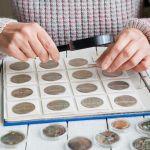Top 5 DIY first-aid tips
Most adults and children are going to get injured at some point in their lives, and as we age ad become less flexible and resilient,…
First- aid tips for common accidents. (Shutterstock)
Most adults and children are going to get injured at some point in their lives, and as we age ad become less flexible and resilient, the higher our chances are of getting frequent bumps and bruises.
Thankfully, you don’t always have to run right to the doctor’s. With a little first-aid knowledge you can start the healing process off right at home.
SEE ALSO: Ready for your summer adventures: Don’t forget your first-aid preparations
It is important to remember when using first-aid, however, that it is “first” aid for a reason. Knowing what to do immediately when you have an injury is not an excuse to not go to the doctor’s when you should. First-aid is a means to give your body the best healing advantage possible; if an injury is severe you should always seek professional medical attention.
For those instances when home care suffices, Saludify has compiled these first-aid tips to see you through:
Bruises

First-aid trick for bruises. (Shutterstock)
Bruising means there is bleeding beneath the skin. Cooling the area is the first part of bruise first-aid; the application of ice or cold water will shrink blood vessels and decrease the amount of blood pooling in the area.
Massaging the area a few hours later?even though it may be uncomfortable?will help the body remove the pooled blood, allowing the bruise to fade faster. Many athletes advocate the application of arnica gel to the area. This natural, herbal topical is said to relieve pain and help bruises fade.
Bad sunburns

First-aid trick for sunburns. (Shutterstock)
Summer is the season for sunburns, and if you’ve been out in the sun too long you probably want toms relief from your painful skin. While there isn’t much you can do to prevent skin from peeling, Life and Beauty Weekly indicates hydration is one of the best ways to help skin after it’s been in the sun too long. By using aloe gel or another type of soothing moisturizer, skin cells maintain their health and can move forward with the healing process.
Thorn removal

First-aid trick to remove thorns. (Shutterstock)
One of the most popular first-aid tricks out there is removing thorns from tender areas of the body. While old-school methods suggest using a needle to dig the thorn out, there are two other options you might want to try first. E.R. physician Dr. Thomas Tallman suggests using candle wax or duct tape to pull out thorns.
While the duct tape is self-explanatory, the candle wax is a little less so. First, melt the wax and allow it to cool slightly so it doesn’t burn your skin. Pout the way over the area with the thorn and allow it to harden. When you peel the wax off, the thorn should b with it.
Food poisoning

First-aid trick for food poisoning.(Shutterstock)
It’s bound to happen to you, even if you cook in your own home everyday. Food poisoning is no fun, and unfortunately the best way to feel better is usually to vomit it out of your system. While your body is taking the natural course of treatment, however, it is important to remember to stay hydrated, and sometimes water isn’t enough.
Dehydration can be more dangerous to an individual than the food poisoning itself, and an easy way to stay hydrated is to drink an electrolyte solution like Pedialyte whenever possible. If you are unable to keep fluids down, a trip to the hospital may be in order.
Migraine relief

First-aid trick for migraines. (Shutterstock)
Though it may not work for everyone, there is a neat first-aid trick that might help when you feel a migraine coming on. Because experts feel these painful headaches are the result of blood flow in the brain, encouraging that blood to move is potentially relieving.
A old traditional remedy for a migraine involves soaking your feet in hot water while at the same time applying an ice pack to the back of the neck. The difference in temperature supposedly encourages blood to flow toward the feet, relieving pressure in the head.
SEE ALSO: The health benefits of arnica




